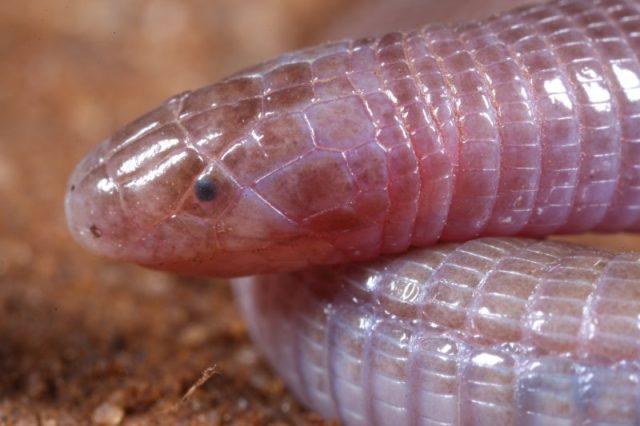Beneath the sandy terrain of Arrakis, colossal sandworms evoke both fear and admiration in the blockbuster “Dune” franchise. Originating from the 1965 novel, these sandworms have evolved into iconic figures in the realm of science fiction. However, their existence is not confined to mere fantasy. Here on Earth, a comparable species dwells beneath the surface.
Drifting between a few millimeters to several inches in length, worm lizards are captivating creatures inhabiting regions across Africa, South America, the Caribbean, and southern California.
With approximately 200 distinct species, worm lizards, scientifically referred to as amphisbaenians, exhibit a diverse array of characteristics and behaviors.
Unveiling the Enigmatic World of Worm Lizards
Despite their intriguing nature, worm lizards remain shrouded in mystery due to their elusive and subterranean lifestyle. Described as “sort of rare” by Patrick Lewis, Ph.D., from Sam Houston University, these creatures possess lizard-like heads, formidable teeth, and serpentine bodies. Some species even display vestigial limbs and pelvises.
Lewis, intrigued by these cryptic creatures during his research on environmental shifts in Botswana, highlighted the challenge of studying them, primarily due to their diminutive size and intricate skeletal structure.
In collaboration with University of Texas researcher Chris Bell, Lewis embarked on a quest to unravel the secrets of these minuscule beings. Conventional dissection methods proved inadequate for such delicate specimens, prompting the duo to turn to advanced technology for answers.
Venturing into the CT Lab at the University of Texas, Lewis and Bell leveraged cutting-edge CT scanning techniques to delve into the minute details of the worm lizards’ anatomy.
Unveiling the Intricacies of Worm Lizard Skulls
Navigating the complexities of conducting CT scans on these tiny creatures posed a unique challenge, ingeniously tackled by Jessica Maisano, a research science associate at the CT Lab. Employing a collection of straws for mounting specimens of varying sizes, Maisano meticulously prepared the worm lizards for scanning.
The resulting scans unveiled a fascinating revelation about the worm lizards’ skulls — a labyrinthine network of interlocking plates resembling a Chinese finger puzzle. This intricate skull structure enables the worm lizards to utilize their heads as efficient digging tools, essential for their subterranean lifestyle.
The 3D models derived from these scans not only provide valuable insights into the anatomy of worm lizards but also offer a gateway to understanding the construction of vertebrate skulls, including those of extinct species.
Through the lens of these living amphisbaenians, researchers aim to glean profound insights into the evolutionary history of vertebrate skulls, bridging the gap between past and present forms of life.
